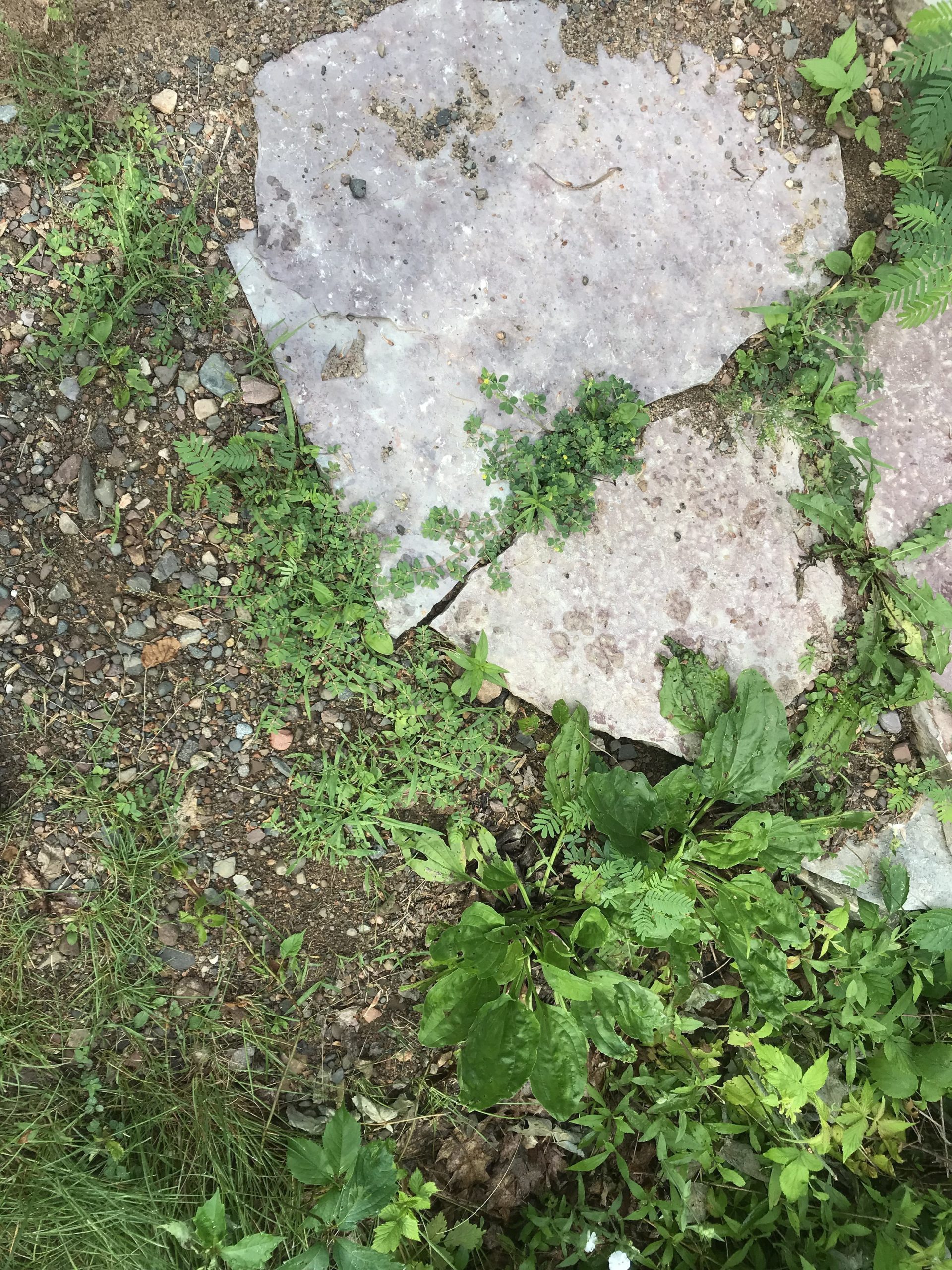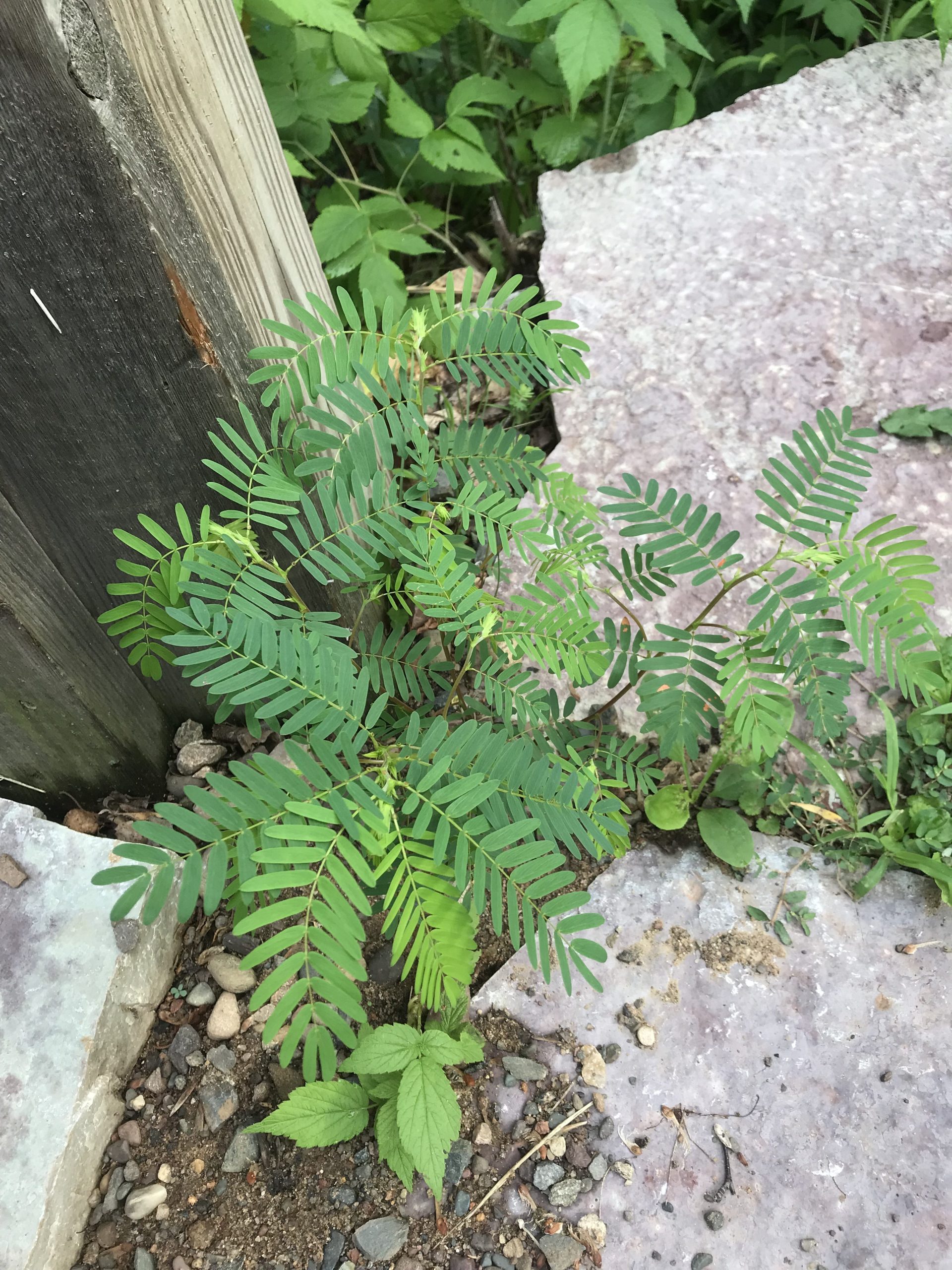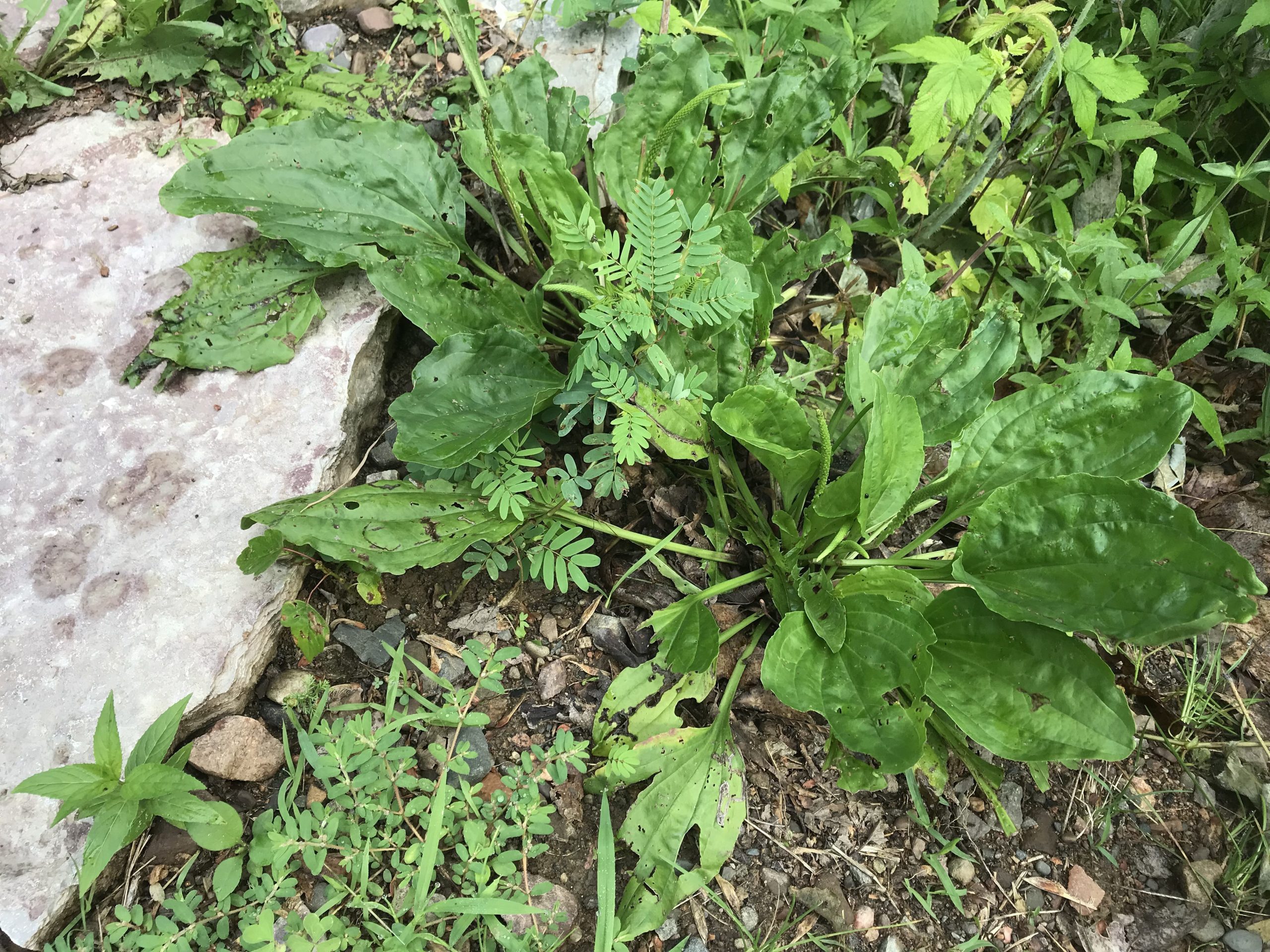Weeds, a.k.a. Wild Urban Plants
What is a weed? Emerson said they are plants whose utility has yet to be found. From an ecological perspective, they are colonizers of disturbed soil. Often annual, they produce impressive amounts of seed that float off to find bare soil, sites free from competing plants. They are modifiers. Weeds build soil organic matter to make it easier for perennials to follow in subsequent seasons. Perhaps we could change our focus to understanding their utility – thinking of them as “wild urban plants” as defined by Peter Del Tredici in his book, Wild Urban Plants of the Northeast, Cornell University, 2010.
This week we have many possible candidates that should be controlled before going to seed. This discussion will focus on principles of disturbance and where to focus attention using a few examples.
This first view is the gravel between and adjacent to an actively used path at a driveway gate:
We can identify a number of wild plants. Let’s look closer to see which ones we should invest time in controlling.
The dominant plant in this view below, with small, opposite leaflets and a reddish, multi-branched stem that stays tight to the ground, as implied by its common name, prostrate knotweed, Polygonum aviculare, could be a keeper. It is extremely tough, adapted to drought, compaction/foot traffic, salt tolerant, and never needs mowing, and converts bare soil or gravel into a soft carpet. Why fight it? Here, it would be best to select out the grass seedlings (either smooth crabgrass or purple lovegrass) before they get large.
In the cover photo at top, we have at least six species growing in a 6” x ½” gap between flagstone. Here it is again, plants numbered:
From left to right:
- prostrate knotweed again
- taller lance-leaved, could be horseweed or marestail, Conyza canadensis (pull that now, before it gets to 6’ maximum height). More information coming in a future post.
- scalloped, single leaf (buttercup or creeping Charlie?), wait to ID before pulling
- sprawling stem, leaflets like clover, tiny globular cluster of yellow flowers is black medic, Medicago lupulina. Why bother controlling this tough plant? It stays tight to the ground, has pollen for bees, fixes nitrogen to build soil nutrients with Rhizobium It is extremely drought tolerant and grows in the worst conditions in full sun.
- fine leaflets on green stalk (just two plants), partridge pea, Chamaecrista fasciculate. Wonderful native annual, probably too tall for this location. More to follow below.
- Broadest leaf on far right, broadleaf plantain, Plantago major, nice prostrate leaves, but without sufficient trampling would get too tall in this path setting. More to follow.
Several partridge pea plants (raspberry at bottom of view should be pulled now) next to gate post:
In this location their standard 12-18” height would not be a problem. Great bee attractor; long-tongued bees pollinate large yellow blossoms with clusters of dark stamen. This native can colonize moving sand. Extremely drought tolerant and another nitrogen-fixing root system. Its ripe seeds explode out of the 2” long pods seeking new gravel or empty habitat to exploit the following growing season. Cut it if it is too tall and it will bloom close to the ground.
Another view of broadleaf plantain, an indicator of compacted soil:
Chewed leaves applied on skin make a quick remedy to soothe insect bites or skin rash from stinging nettle. Save this plant whenever you can.
Bottom line: Make the most of the colonizer plants that might otherwise annoy you by understanding their value as ecological healers.
– Douglas Owens-Pike, Metro Blooms Sustainable Landcare Expert






